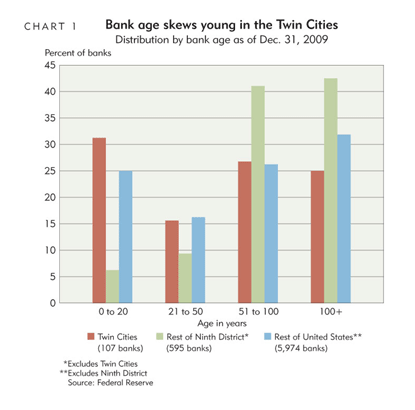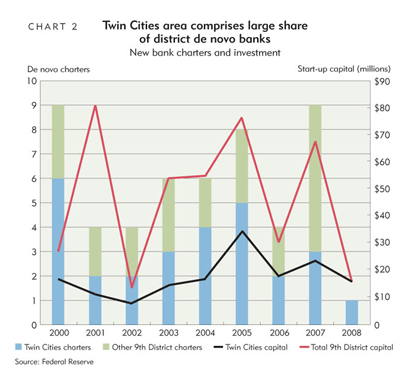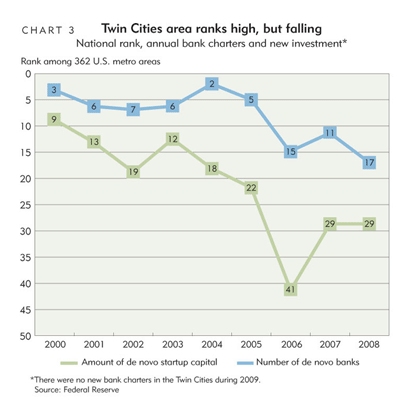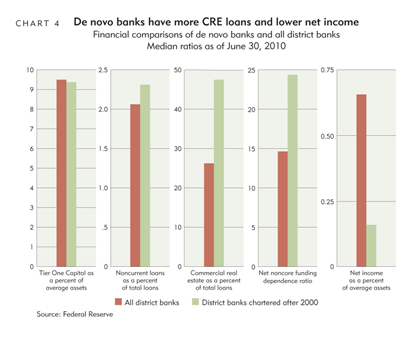
Dedicated industry watchers may have noticed something oddly similar about three Twin Cities area banks that failed in the past year. Riverview Community Bank in Otsego, Brickwell Community Bank in Woodbury and Pinehurst Bank in St. Paul were all shuttered before reaching their seventh birthdays. (The average bank in the district has been operating for seven decades.) In fact, it might not be just a quirky coincidence. Last year, the Federal Deposit Insurance Corp. released a letter voicing its concerns that depository institutions less than seven years old were apparently failing with greater frequency than others.
In banking, as in other business sectors, youth can be both a buoy and an anchor. Newly chartered banks—also called de novo banks—typically begin life with significant, uninvested capital to put to use in underserved markets and financial niches. But they can struggle to gain the necessary market depth, traction and consumer loyalty to survive tough economic times. As bankers nationwide have learned, operating losses can outlast investor funds, and young banks can be especially vulnerable.
Is this true for Ninth District banks? A fedgazette data review found support for the phenomenon and some unique features of the district’s de novo banks.
The failure of youth
To begin with, the district has a smaller portion of young banks than the nation as a whole. The exception is in the Twin Cities, the district hatchery for young banks (see Chart 1) and where banks skew younger than the national total. Past fedgazette research found that the Twin Cities ranked highly among all metro areas in the country for the number of new banks chartered during the opening years of the decade (see Charts 2 and 3).
As it turns out, those newly minted banks ended up failing more frequently than other, older banks. Almost half of all the banks that failed since the beginning of 2008 through the second quarter of 2010 in the Twin Cities, accounting for 21 percent of failed banks in the Ninth District, were less than seven years old. That compares with 17 percent of failed banks nationwide. But before you panic about the prospects of your local young bank, it pays to know that that there were only six bank failures in the Twin Cities and 14 failures in the district.
What makes young banks more likely to fail? Research generally points to three major issues that take time to resolve as de novo banks establish their business: an inability to generate earnings, excessive risk in lending and volatile funding prior to the buildup of stable deposits.
And, in fact, all of these factors are present among the failed de novo banks in the Ninth District. Other young banks in the district look fairly similar to the mature population in terms of their capital and the rate of noncurrent loans (loans that are past due by 90 days or more) (see Chart 4).
However, they differ in the composition of their loan portfolios; district concentration in comparatively risky commercial real estate. Moreover, de novo banks rely to a greater extent on more volatile sources of funding (so-called noncore funds like jumbo certificates of deposit and brokered deposits rather than traditional savings). And unlike the mature banks, the average de novo bank earns a very small profit.
As long as capital remains strong and loans continue to perform, young banks can remain stable and healthy. But these basic measures reveal that riskier loans, less reliable funding and lower income continue to challenge de novo banks.









